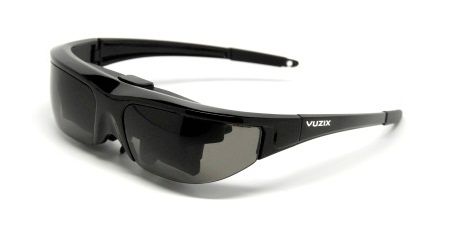As they say, “technology drives consumer demand". Well, not in my book! I look closer to the edges – to the users themselves - for the drivers of consumer demand. Technology that enables consumer desire is where my interest lies. The question is whether stereo 3D - realism that plays out not just on the silver screen, but in front and behind it as well - is here to stay this time or not?
I look for and get involved with technology and products that have the potential to put smiles on people’s faces and adding 3D realism to existing rich content and applications has the potential to do just that. Smiles mean value and value means revenue can flow. The challenge of finding the right financial model is another subject entirely but all approaches get enabled by quality entertainment that people want to watch.
It is important to note that not only is content king, but the consumer is king as well and is now much more in charge of the ways information and entertainment he or she enjoys is acquired, viewed and shared than ever before. Technology has enabled that. So if 3D is to be a lasting fixture, it must be consumer priced and easy to get, use and enjoy.
The three dimensions of 3D
But first, let’s talk about what we mean when we say “3D”, because 3D is everywhere, but comes in several forms.
Firstly, most digital computer generated content is being created in 3D these days. 3D graphics, object and scene oriented games, video, animations, cartoons, and special effects are all computer generated objects rendered in 3D. Even everyday products we use are initially drawn using Computer Aided Design tools (CAD) to become 3D objects that can be turned and looked at from all angles without having to re-draw each view. The fact that most things are drawn this way is important, but this is not actually Stereo 3D.
Stereo 3D (S3D) - the viewing of real or created 3D images so that the element of depth is visually present and pleasing is the next step and the important one we are talking about here. Basically, it is flat screen story-telling but with the realism added that our two eyes naturally enjoy every waking hour. Like moving from silent movies to ‘talkies’, and black and white to colour. These were very natural enhancements that added real life aspects missing before. Such is also the case when moving from 2D to S3D.
There is an interesting third dimension of 3D which puts us in virtual worlds where we can not only watch from our seats, but get up and walk around and mingle inside virtual worlds full of 3D scenes and objects. Because these are all created as 3D graphical elements, they can also be enjoyed in S3D (just like real life!). But that is one step beyond our discussion here. Let us focus on S3D video, animations and pictures for the moment.
3D content for the masses
Viewing of still images and pictures in S3D has been the fascination of people young and old since Victorian times in the form of stereoscopic viewers and more recently the Viewmaster. Who didn’t have one of those as a child? These innovations brought flat pictures to life. Enjoyment of this form of S3D mostly happened in the home. Lots of content of all types were made available over the years.
Viewing of full motion S3D however has mostly happened in the cinema; and the current rebirth is appearing there first again in the form of blockbuster movies such as Beowulf, Monsters vs Aliens, Avatar, etc. In order to become a lasting phenomenon however, it must enter the family or personal viewing arena as did all forms of 2D entertainment and informational media.
Blockbuster movies, however, are a good start and there are plenty of them here with us and coming soon to wet the whistle of the average consumer. People are enjoying these and want more, and the box office returns indicate that. The rapid conversion of cinema theatres from film to digital is driven by new quality and distribution economics, but it also means that 3D in the neighbourhood theatre is becoming a common occurrence. Digital Cinema conversions are the key enabler of 3D in theatres large and small and is but a small incremental part of the total upgrade to digital.
But as with the move from conventional cinema to TV years ago, the content portfolio is becoming much more varied for S3D other than just movies. So we are seeing not just blockbuster films but games, animation, sports, fashion, ballet and many other forms of interesting and entertaining content is being created and delivered in S3D. The realism draws you into the scene and the action, and gives you the best seat in the house!
User Generated Content - S3D from the masses
Unbelievably, more and more people are shooting snapshots and video in 3D. One only has to enter the search term “3D” into Flickr to find a few hundred thousand red/cyan and side by side (cross eye) images, pictures and holiday snaps. On the video side of things, YouTube has recently set up a whole facility for downloading and viewing the various formats of 3D videos.
Dual lens 3D cameras are starting to appear (again) such as the Fujifilm 3D camera which just came on the market in Japan. The major difference this time is that the new breed of 3D cameras are digital, not film and thus enable many new ways to enjoy, share and socialise. A Stereo 3D webcam has even come on to the market called Minoru. Not just for taking 3D pictures and videos, but also works over MSN, Skype and other video calling mediums. Just post one of the six cardboard glasses that comes with the webcam to each of your friends and let the 3D fun begin!
The S3D viewer’s dilemma – Screens
There are, however, some pitfalls. The industry has picked up on the move of 3D from cinema to personal viewing and there are all sorts of innovations from 3D digital picture frames to special TV’s and large format projectors, coming to the surface. Blu-ray supports 3D from the outset. The consumer electronics show IFA in Berlin and content industry events such as IBC a few weeks ago in Amsterdam were awash with all sorts of consumer targeted products supporting 3D or “3D ready” screens. They are clearly coming along and the opportunity is obviously recognised but image quality and/or cost are two of the current barriers to massive take-up.
Good quality 3D viewing can be had at a price but only with various forms of active and passive glasses arrangements which must be worn to separate right image from left on the single, common screen. Fooling your two eyes into each seeing something different from the same screen has its challenges! Glasses-less 3D screens are the holy grail, but are both expensive and low in image quality and according to experts presenting at IBC are expected to take 4 or 5 years to become a consumer practicality.
The areas of emerging promise I see are in a category I call the “Virtually Large, Actually Small” (VLAS) displays, now more and more being used with portable media players and mobile phones. These are accessories or embedded technologies like video eyewear and Pico projectors that have made massive advances in size, cost, quality and styling in the last year or so. These are devices that fit in your pocket and make the small screen large. Larger than the one in your lounge in some cases and even as large as the one in the cinema. The magic of technology!
While the world searches for a 3D screen that does not need special glasses, there are already 3D glasses that don’t need a screen and they're commercially available and being purchased for 2D viewing and 3D gaming today. These video eyewear products make a large ‘virtual’ screen very portable. One of the companies making these, Vuzix has leveraged its developments in military, industrial and more recently 3D gaming on PC’s to produce the dream machine for personal 3D viewing. These glasses have 2 displays inside that become one cinema sized screen when you put them on. Because they have both a left and right display, they can support 3D wonderfully as long as the optics, formatting and design are done right (tall order!). This category has also now moved from geek to chic as more recent announcements indicate a move to bigger and better screens in new sunglasses styling.
3D to 5B (B=Billions)
So the real breakthrough here is that all the billions of mobile phones, iPods and other types of portable games and media players which are fully capable of storing, streaming and letting consumers view rich content on small screens now become a new distribution channel for large screen 2D and 3D content thanks to the VLAS devices.
Although the eyewear is available, the content, either 2D or 3D, is not currently being sent down that channel. Mobile operators take note! Or is it the content owners, broadcasters and distributors who need to take this more seriously?
And it is not just video eyewear that might bring 3D to the masses. In the last year several companies have introduced pocket sized Pico projectors that enable content viewing and sharing. The first ones based on LEDs are already out and open up a new category of VLAS devices, but the pocket projectors based on lasers are the ones to watch as they produce higher resolutions, brighter colours and are focus free - an absolute requirement for mobile viewing. They are also smaller and use less power as well. Microvision looks to be the first company to come out with a laser based consumer product in the next month or so. So the new breed of Pico projectors will be without fins, fans or focus wheels and, importantly for this discussion, also sport display engines made up of three lasers and a fast moving mirror the size of a pin head. These projectors will be tiny – amazingly so - about the size of an after dinner mint!
Although not planned for current products, it is not a stretch of the imagination to realise that two of these mini projector engines could be packaged to produce a pocket sized 3D device. Food for thought, but don’t expect to see that right away.
Is there hope?
The combination of compelling content and consumer desire has always been, and still is, the driver of value and revenue in the entertainment business. Since both seem to exist in the case of 3D, I think there is more than just hope, but significant opportunity. As an investor it is therefore one of the areas I am concentrating on. The “last mile” has always been the challenging bit for the communications industry, and that is the challenge in delivering 3D content. The screens needed to watch it in the home are simply not yet available or affordable. But large screen personal viewing of 3D is available today in the form of video eyewear.
What is next?
Well, virtual reality ‘worlds’ are already upon us and augmented reality applications are coming on stream in mobile rapidly. This is mostly based on the ability to deliver content and information that people value, superimposed on the real world around them. Holding the phone at arm’s length and pointing it at things will soon lead to superimposing information on whatever I am looking at based on my interests, location and mode/mood at the time. It seems to me that there will be interest in ‘active’ digital glasses that look like ordinary ones but take on this new capability. Since the real world is in Stereo 3D it is natural to think that virtual and augmented reality will be most natural in S3D as well.
User driven advances in this area based on technology capable to deliver on the promise will be an area of interest for me over the next year or so, but for now, let’s concentrate as an industry on the user experience associated with any content, anywhere, anytime to entertain, inform and make it more realistic with S3D!
The order of the day is to augment relaxation first and later take on the task to augment reality when the technology catches up with the consumer defined need.
Ken Blakeslee is Chairman of WebMobility Ventures which is focused on Discovery, Advisory and Investment in Innovations in the emerging Services Convergence areas of Mobile. kblakeslee@webmobility.com
Enjoyed this article about 3DTV? Then check out more articles in our 3DTV week on the 3DTV homepage.



